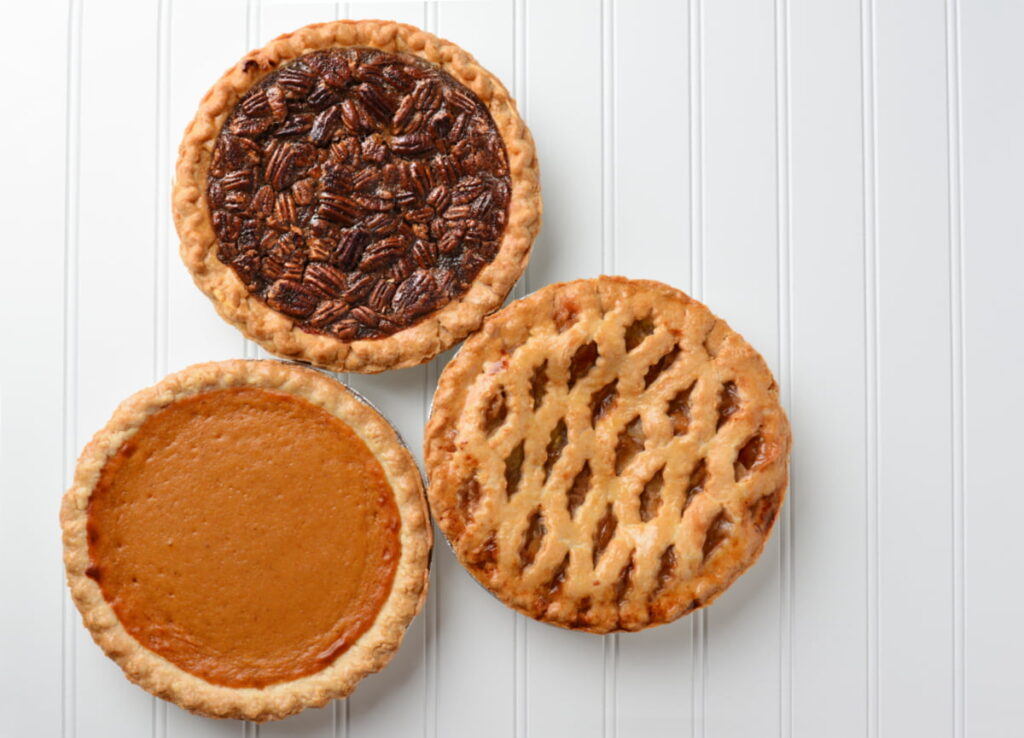
Yes, you can absolutely freeze pie. Whether it’s apple, pecan, pumpkin, or even key lime, most pies freeze beautifully if you know how.
Over the years, I’ve frozen entire pies, single slices, unbaked crusts, even the last lonely sliver of pecan pie that didn’t deserve the trash. Some came out bakery-perfect, others… not so much.
After dozens of experiments, advice from my chef friend Trevanne, and far too many late-night TikTok rabbit holes, I’ve learned the freezer can be a pie’s best friend, if you treat it right.
Here’s everything you need to know to freeze, thaw, and enjoy pies that taste as good as fresh.
What Freezing Does to Pie

When you freeze a pie, you’re pressing pause on chemistry. The water in the filling turns into tiny ice crystals; the butter in the crust hardWhen you freeze a pie, you’re pressing pause on chemistry. The water in the filling turns into tiny ice crystals; the butter in the crust hardens; sugar and starch bind together differently.
If those changes are controlled, the texture stays beautiful, but it also depends on the type of pie.
- Fruit pies handle freezing like pros, their thickened fillings and flaky crusts hold up remarkably well.
- Custard and cream pies are a little more delicate. Their egg-based fillings can separate or “weep” slightly as they thaw.
- Nut pies (like pecan) fall somewhere in between, rich, syrupy fillings stay stable, especially if fully baked first.
And here’s the secret many pastry chefs swear by: freezing can actually improve unbaked pie crust. Cold butter expands as it bakes, creating those dreamy, flaky layers. So freezing isn’t cheating, it’s a pastry hack.
Which Pies Freeze Best (and Which Don’t)
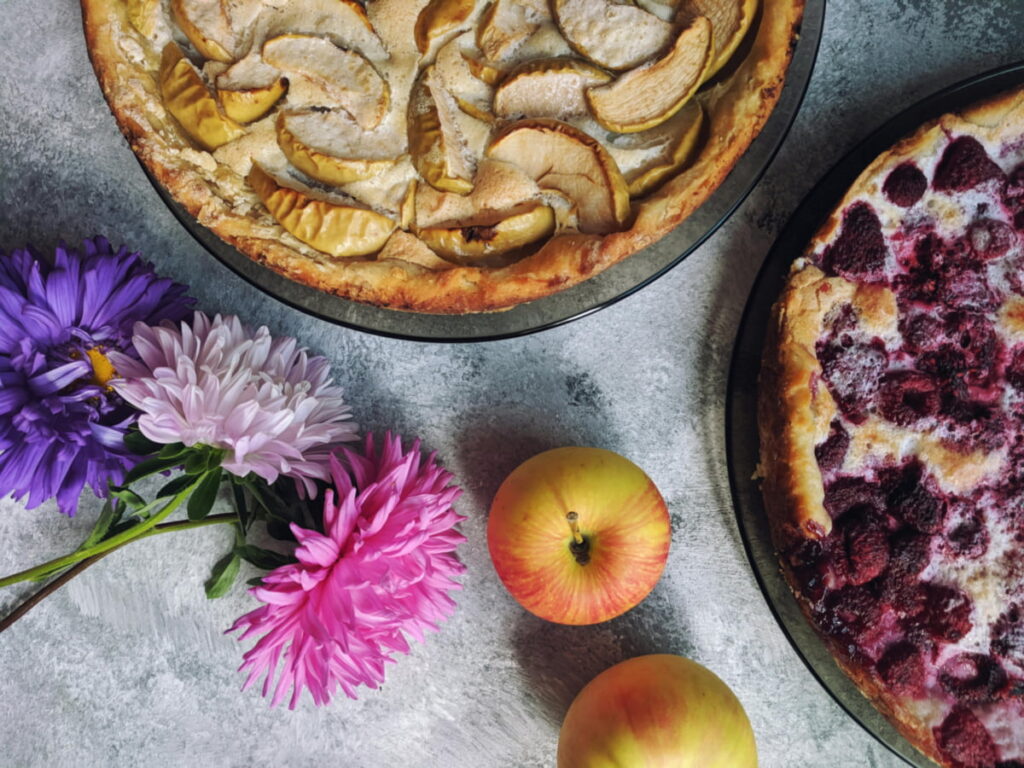
Not every pie handles the freezer the same, moisture, fat, and filling make all the difference.
As noted in a bakery-quality guide , high-fat crusts and thickened fillings tend to retain their structure far better through freezing and thawing.
After years of baking (and plenty of freezer tests), here’s what I’ve learned about which pies freeze beautifully and which are better enjoyed fresh.
Fruit Pies (Apple, Cherry, Blueberry, Peach, Mixed Berry)

Freezability: ★★★★★
Freeze baked or unbaked.
Fruit pies are the freezer MVPs. They’re sturdy, flavorful, and forgiving. I’ve frozen apple, cherry, and blueberry pies for up to four months, and honestly, they tasted freshly baked after reheating.
To freeze baked fruit pies:
- Cool completely, not even a hint of warmth left.
- Wrap tightly in plastic wrap, then in foil or a heavy freezer bag.
- Label and freeze flat for up to four months.
To freeze unbaked fruit pies:
- Assemble in a metal pie pan (it chills faster than glass).
- Freeze uncovered until solid, then double-wrap.
- Bake directly from frozen at 400°F, adding 15–20 minutes.
Pro tip from Chef Trevanne: “Always vent the top crust before freezing, steam still needs an escape path once it hits the oven.”
Best for: Apple, blueberry, cherry, peach, mixed berry.
Skip: Very juicy fillings without a thickener, they’ll leak when baked from frozen.
Nut Pies (Pecan, Walnut, Maple, Chocolate Pecan)
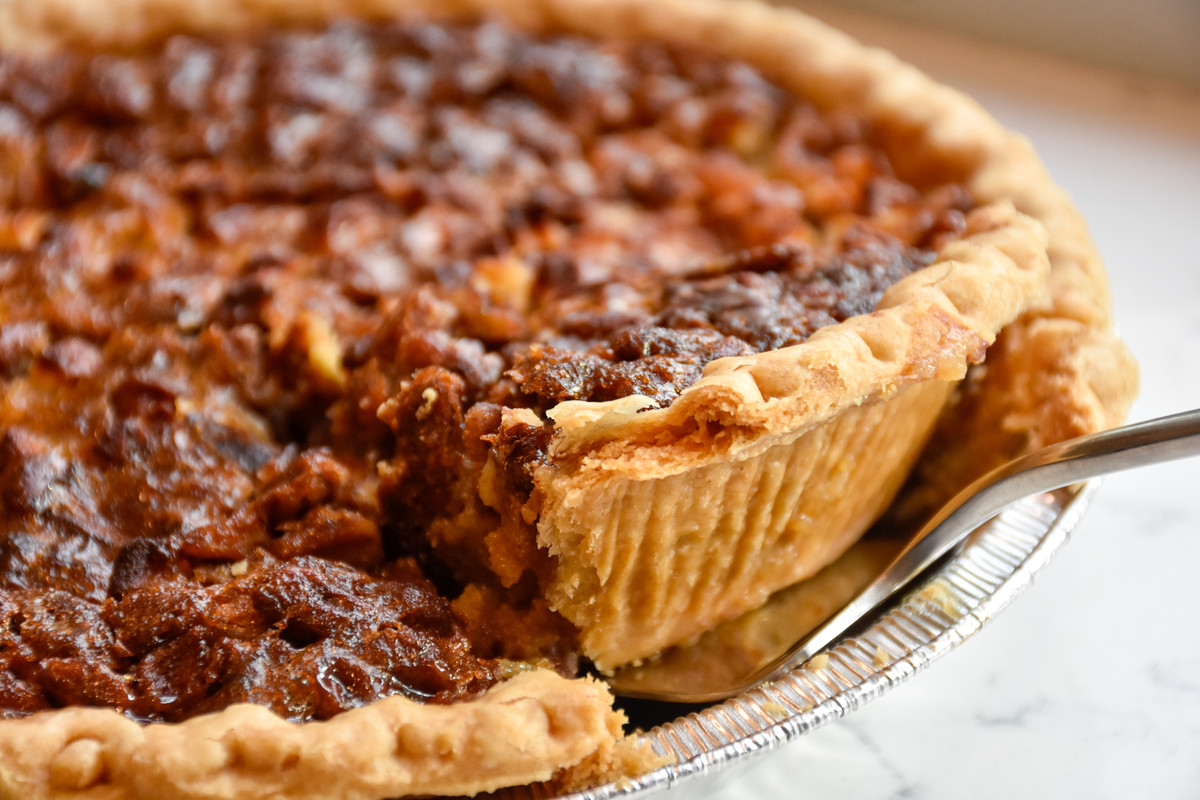
Freezability: ★★★★☆
Freeze baked only.
Pecan pie is one I’ve personally frozen a couple of times, especially around the holidays. The syrupy filling (sugar, eggs, corn syrup) firms up beautifully and doesn’t separate when thawed.
To freeze:
- Cool completely, at least 4 hours on a rack.
- Wrap tightly in two layers of plastic wrap and a final layer of foil.
- Freeze for up to three months.
To thaw:
- Move to the fridge overnight.
- Warm in a 300°F oven for 10–15 minutes to refresh the crust.
Custard Pies (Pumpkin, Sweet Potato)
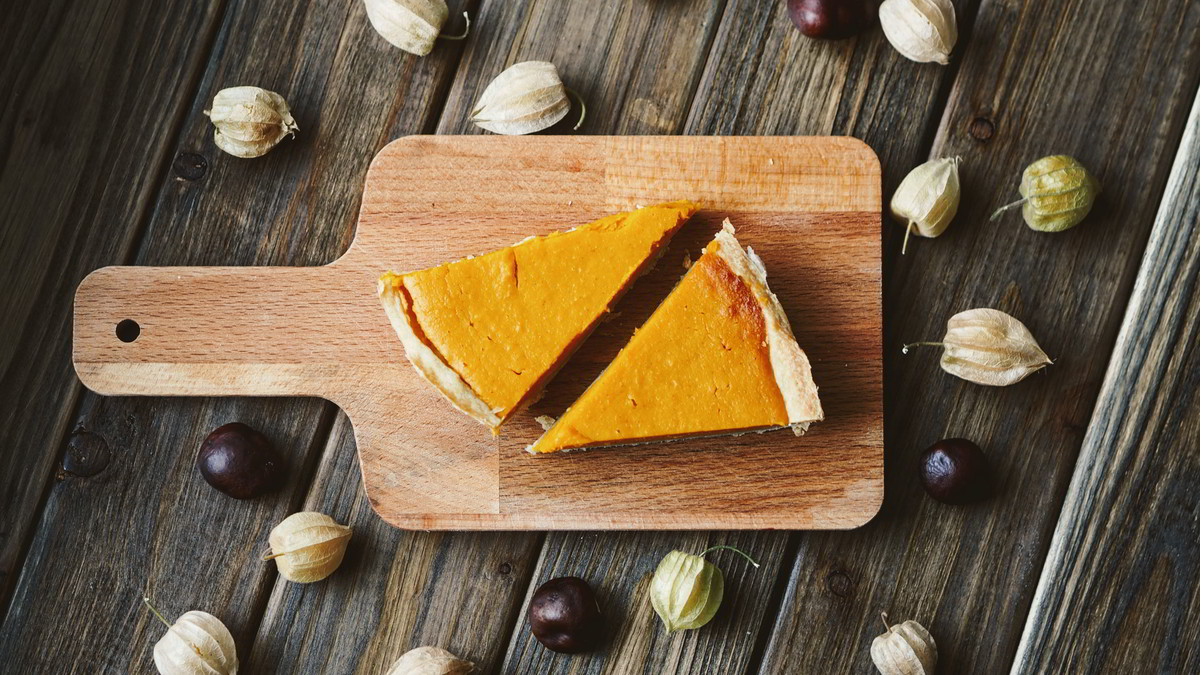
Freezability: ★★★☆☆
Freeze baked only.
Custard pies are a bit temperamental. They freeze well enough if cooled and wrapped properly, but the filling can look slightly “wet” after thawing. The flavor, however, remains spot-on.
I froze a sweet potato pie a few Thanksgiving’s ago to test: the flavor was perfect, though the texture softened slightly near the crust edge.
To freeze:
- Bake and cool fully.
- Wrap tightly in plastic, then foil.
- Freeze flat for up to two months.
To thaw:
- Refrigerate overnight.
- Serve chilled or reheat gently at 325°F for 10 minutes.
Chef’s note: avoid sprinkling spices or sugar on top before freezing, it draws out moisture as it thaws.
Cream & Citrus Pies (Key Lime, Lemon, Coconut Cream)
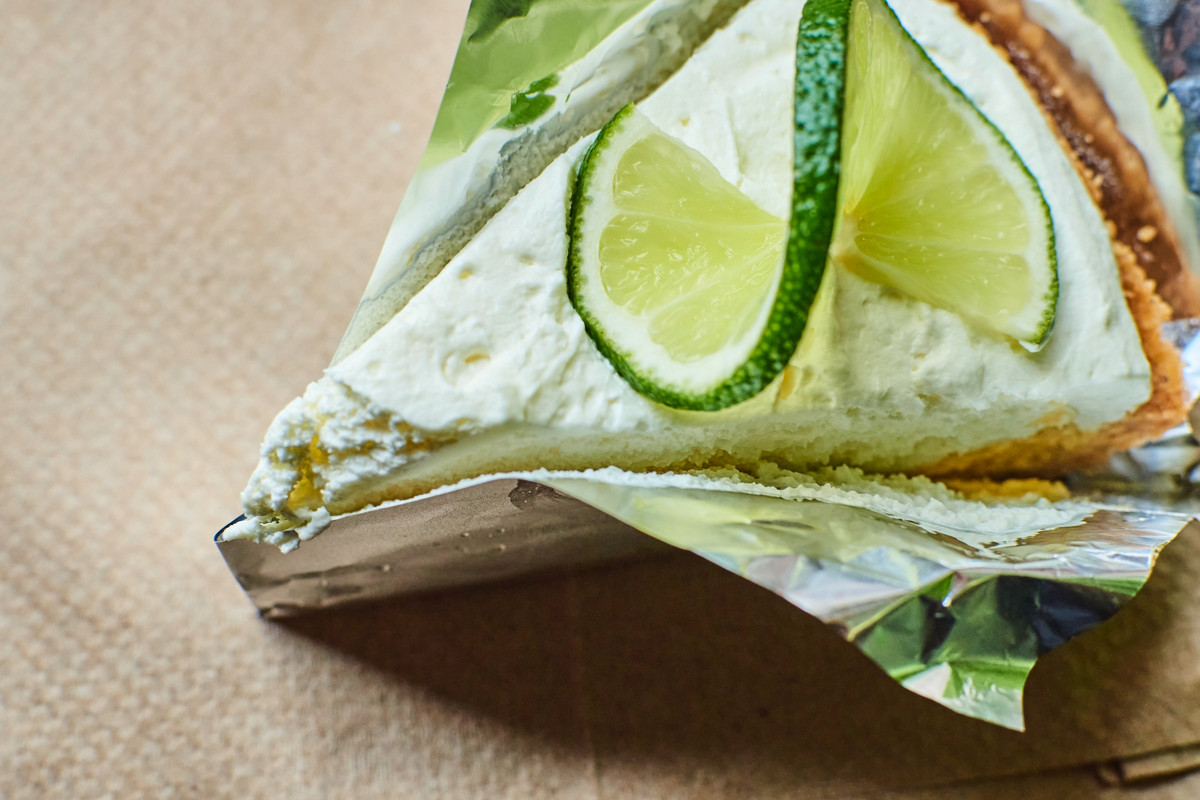
Freezability: ★★☆☆☆
Freeze with care.
Key lime and lemon pies are among the trickiest. Their high moisture and acidity can cause the filling to separate, but they’re still freeze-able with a few tweaks.
I learned this one from a pastry-chef friend who preps dozens of pies for her café: freeze the pie without the whipped topping, and you’ll be golden.
To freeze:
- Freeze the baked filling and crust separately if possible.
- Once solid, wrap tightly in plastic and foil.
- Add whipped cream or meringue only after thawing.
Best for: Key lime, lemon cream, coconut cream.
Avoid: Lemon meringue, the meringue turns rubbery when thawed.
No-Bake or Mousse Pies (Chocolate, Peanut Butter, Oreo)
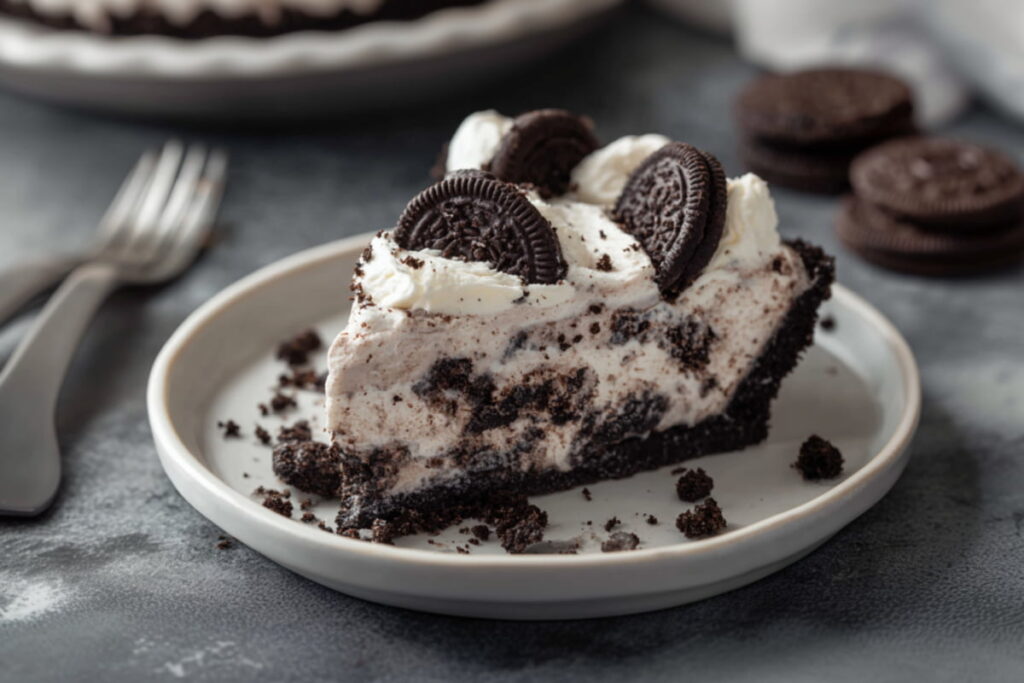
Freezability: ★★★☆☆
Freeze fully assembled, uncovered until solid.
These pies are basically born for the freezer, they already rely on creamy, stabilized fillings. I once froze a peanut butter pie for three months and served it half-thawed, it was the best texture yet: cool, firm, mousse-like.
To freeze:
- Chill the pie until firm.
- Freeze uncovered for two hours.
- Once solid, wrap tightly.
To serve:
- Thaw in the fridge for 6–8 hours.
- Slice while slightly firm for clean edges.
Social tip: One viral TikTok baker suggests pre-cutting slices before freezing so you can “grab-and-go dessert” straight from the freezer. I tried it, game changer.
Whole Pies vs. Slices: What Works Best?

When you’re working with leftovers (or just too many pies, no judgment), freezing slices individually can save space and sanity.
Whole Pies
- Cool completely first, any warmth causes ice crystals.
- Wrap tightly in plastic and foil.
- Freeze flat on a baking sheet.
- Best for baked fruit or nut pies.
Slices
- Flash-freeze slices on a parchment-lined baking sheet for an hour.
- Once firm, wrap each slice in plastic and store in a freezer bag.
- Label clearly (trust me, frozen pumpkin and pecan look identical at 2 a.m.).
Slices thaw faster and reheat perfectly at 325°F for 15 minutes, no soggy bottoms, no waste.

How to Thaw Pies Without Ruining Them
This is where patience pays off. Rushing thawing is the #1 reason pies lose their structure.
- Fruit & Nut Pies: Thaw overnight in the fridge, then reheat at 350°F for 15–20 minutes to crisp the crust.
- Custard Pies: Thaw uncovered in the fridge to avoid condensation on the surface.
- Cream or Mousse Pies: Thaw just until soft enough to slice.
- Avoid microwaves entirely, they turn crisp crusts into rubber.
If the crust looks pale or slightly wet after thawing, a quick 5–10 minute bake at 350°F revives it completely.
Common Pie-Freezing Mistakes (and How I Learned Them)
- Freezing while still warm.
I’ve done this more than once, the trapped steam turned my apple pie crust into mush. Let it cool fully. - Using only plastic wrap.
Freezer burn loves air leaks. Always add foil or a heavy bag. - Skipping labels.
I once defrosted what I thought was pumpkin… it was key lime. The result was very confusing Thanksgiving guests. - Freezing meringue-topped pies.
Meringue collapses in the cold, add it after thawing. - Expecting perfection.
Even the best-frozen pie won’t look identical to fresh-baked, but flavor-wise, it can be 95% there.
A Few Tricks I Picked Up Along the Way
- Use metal pie tins for freezing, they chill faster and can go straight into the oven.
- For fruit pies, sprinkle coarse sugar on top after thawing to refresh that bakery finish.
- For creamy pies, run a warm knife under water before slicing, it prevents tearing.
- For maximum crispness, reheat fruit pies uncovered on a preheated baking sheet.
- And from TikTok: wrap individual slices in parchment before plastic, it genuinely helps maintain crust texture.

Before You Wrap It Up (Literally)
Freezing pies is one of those kitchen skills that’s part technique, part patience, and a little bit of love. Whether it’s a summer berry pie or a leftover slice from the holidays, a few smart steps can keep it tasting fresh long after it leaves the oven. Cool completely, wrap tightly, label clearly, and your future self will thank you.
Have questions or a pie-freezing story of your own? Drop it in the comments, I’d love to hear what worked (or didn’t) for you.
Want to keep going? Check out more practical guides in our How to Freeze Food Collection, from soups and casseroles to fruit and bread, all tested and freezer-approved.